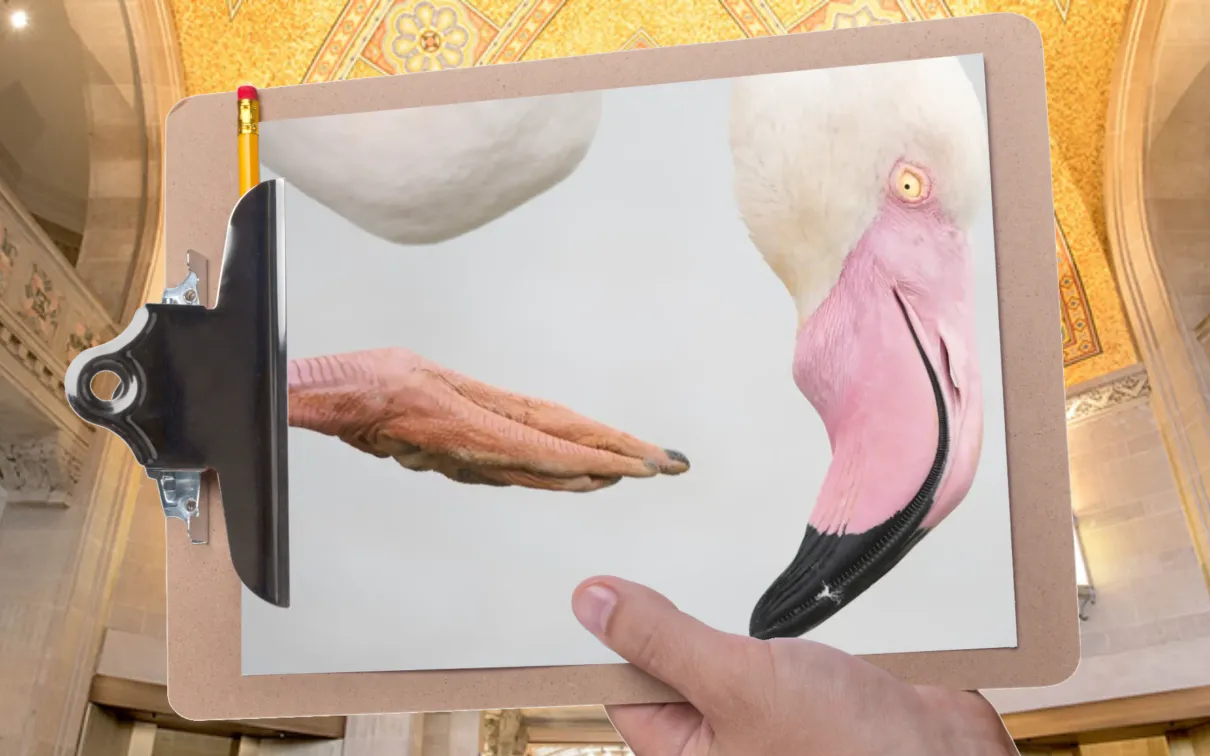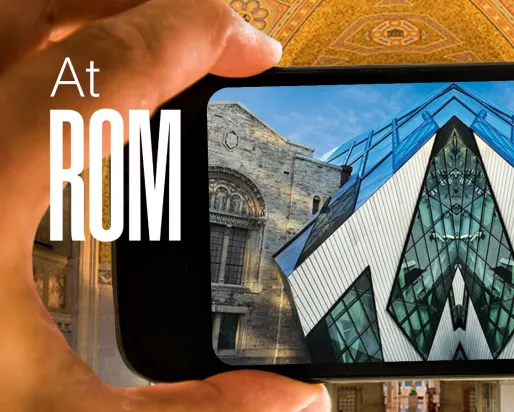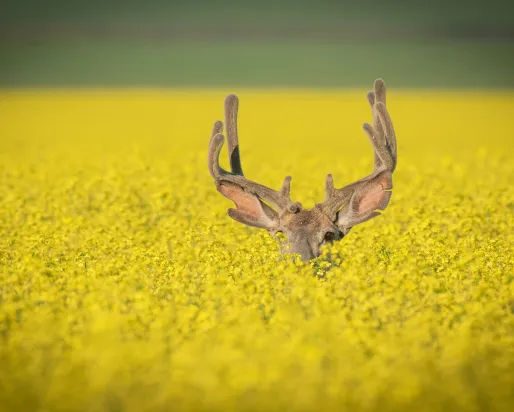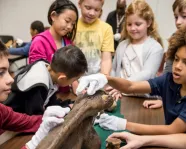Gallery Trail: Wildlife Photographer of the Year 2025
Category
Audience
Age
Grades
Subjects
About
Powerful, inspiring, and enlightening, the annual Wildlife Photographer of the Year exhibition invites viewers into a world of extraordinary images and visual storytelling.
The world's longest-running and most prestigious annual nature photography competition, Wildlife Photographer of the Year attracts and recognizes the world's best nature photography, and has done so every year since 1965.
Each year, the annual competition - organized by the Natural History Museum in London, UK - receives tens of thousands of image submissions by aspiring photographers of all ages. One hundred photographs from this year's competition - the best of the best - will be on view until March 29, 2026.
Experience our world in vivid detail and see some of the most unusual species and their habitats in ways you never imagined. Each back-lit photograph provides exquisite quality and depth. From the photographer's eye to the camera's lens, viewers become witnesses to the lives animals live and the challenges they face. Emotive, surprising, and sometimes sobering, glimpses of life on our planet are showcased through exceptional talent, technical expertise, and perfectly captured moments.
Use this Gallery Trail with an onsite visit to help structure and record your students’ learning in the exhibition. It is available in multiple formats so you have the option to customize it to suit your students’ needs.
Downloads
Download this activity as:
Museum Guidelines
Walk. Do not run.
Use indoor voices.
Stay with your adult.
Don’t touch objects or belongings. Only touch objects that are clearly marked as safe to touch.
Don’t rush. Focus your time on the objects that interest you and do what you can in the time you have.
Make way for Museum Educators if they need a space for a lesson.
Please use pencils and not pens for the safety of the objects.
Ask questions and have fun!
Learning Goals
Understand basic principles of photography composition.
Gain a better understanding of the diversity of living things on Earth and their complex lives and behaviours through the lens of photography.
Examine conservation threats and challenges to living thigs, and how those living things are impacted by human activity.
Encounter Indigenous insights and connections to the subjects of key photographs through the recordings of four Indigenous Knowledge Carriers throughout the exhibition.
Fast Facts
Ontario students are eligible to enter the ROM Wildlife Photo Contest to win a camera or a ROM family membership.
The Natural History Museum in London, UK has been organizing the Wildlife Photographer of the Year competition in London, UK.
This year’s contest attracted 60,363 entries from 113 countries around the world.
Wildlife Photographer of the Year also includes a Young Wildlife Photographer of the Year category for students.
Please Note
If remixing or modifying, please credit: "adapted from a resource by ROM."
Curriculum Connections
Language
- Literacy Connections and Applications – Digital Media Literacy
- Foundations of Language – Oral and Non-verbal Communication
The Arts
- Visual Arts – Reflecting, Responding, and Analysing; Exploring Forms ad Cultural Contexts
Science
- Life Systems – Habitats and Communities
Language
- Literacy Connections and Applications – Digital Media Literacy
- Foundations of Language – Oral and Non-verbal Communication
The Arts
- Visual Arts – Reflecting, Responding, and Analysing; Exploring Forms ad Cultural Contexts
Language
- Literacy Connections and Applications – Digital Media Literacy
- Foundations of Language – Oral and Non-verbal Communication
The Arts
- Visual Arts – Reflecting, Responding, and Analysing; Exploring Forms adand Cultural Contexts
Science
- Life Systems – Biodiversity
Language
- Literacy Connections and Applications – Digital Media Literacy
- Foundations of Language – Oral and Non-verbal Communication
The Arts
- Visual Arts – Reflecting, Responding, and Analysing; Exploring Forms ad Cultural Contexts
Science
- Life Systems – Interactions in the Environment
Geography
- Physical Patterns in a Changing World
- Natural Resources Around the World: Use and Sustainability
Language
- Literacy Connections and Applications – Digital Media Literacy
- Foundations of Language – Oral and Non-verbal Communication
The Arts
- Visual Arts – Reflecting, Responding, and Analysing; Exploring Forms ad Cultural Contexts
Science
- Earth and Space Systems – Water Systems
Language
- Literacy Connections and Applications – Digital Media Literacy
- Foundations of Language – Oral and Non-verbal Communication
The Arts
- Integrated Arts – Reflecting, Responding, and Analysing
- Visual Arts – Reflecting, Responding, and Analysing; Foundations
Science
- Biology – Sustainable Ecosystems and Climate Change
- Chemistry – Relating Science to Our Changing World
Geography
- Physical Geography and Physical Processes in Canada
English
- Media Studies
The Arts
- Visual Arts – Reflecting, Responding, and Analysing; Foundations
- Media Arts – Reflecting, Responding, and Analysing; Foundations
Science
- Biology: Sustainable Ecosystems and Climate Change
Geography
- Physical Geography and Physical Processes in Canada
English
- Media Studies
The Arts
- Visual Arts – Reflecting, Responding, and Analysing; Foundations
- Media Arts – Reflecting, Responding, and Analysing; Foundations
Media Studies
- Media and Society
- The Media Industry
Environmental Science
- Scientific Solutions to Contemporary Environmental Challenges
- Human Health and the Environment
- Sustainable Agriculture and Forestry
- Human Impact on the Environment
Science
- Biology: Diversity of Living Things
Geography
- Natural and Human Systems
English
- Media Studies
The Arts
- Visual Arts – Reflecting, Responding, and Analysing; Foundations
- Media Arts – Reflecting, Responding, and Analysing; Foundations
Geography
- The Environment and Resource Management
- Living in a Sustainable World






